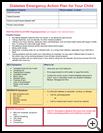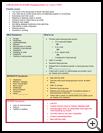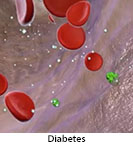
Diabetes: Infections
________________________________________________________________________
KEY POINTS
- If your child has diabetes, he or she has a higher risk of getting infections than people who don’t have diabetes.
- If your child has an infection, your healthcare provider will prescribe antibiotics or other medicine to treat the infection.
- Because the infection may get worse more quickly if your child’s sugar is high, his or her blood sugar must be controlled.
________________________________________________________________________
What infections are common with diabetes?
If your child has diabetes, he has a higher risk of getting infections than people who don’t have diabetes. Your child is more likely to get:
- Infections caused by bacteria, such as ear, sinus, bladder, or kidney infections, boils (infected lumps under the skin), styes (infected lumps on the eyelid), gum disease and other mouth infections, foot infections, or infected cuts and sores
- Fungal infections, such as thrush, athlete’s foot, ringworm, nail infections, or vaginal yeast infections
If your child gets an infection caused by a virus, such as the flu, he is more likely to have severe symptoms or problems.
Even a small cut, on your child’s foot for example, may not heal well and may become a serious, life or limb-threatening problem.
What is the cause?
Diabetes may cause more infections because:
- High blood sugar levels seem to help the growth of some bacteria and yeast.
- High blood sugar levels may make it harder for the immune system to fight infections.
- Poor blood flow, especially to the feet and lower legs, can make it hard for the body to fight infection in even small scrapes and cuts.
- Your child may not feel injuries to his feet, legs, or hands because of nerve damage and numbness. Without treatment the injuries may get infected.
What are the symptoms?
Depending on the type of infection and where it is in the body, symptoms may include:
- Redness, swelling, and skin that feels hot to the touch
- Itching
- Rash
- Red streaks that spread away from the wound or sore
- Swollen and painful lumps or pus-filled sores
- Painful urination or urinating more often
- Fever
- Vomiting or diarrhea
How is it diagnosed?
Your healthcare provider will ask about your child’s symptoms and medical history and examine your child. Tests may include:
- Tests of a sample of pus
- A biopsy, which is the removal of a small sample of infected tissue for testing
- Blood and urine tests
- X-rays
How is it treated?
Your healthcare provider will prescribe antibiotics or other medicine to treat the infection. Because the infection may get worse more quickly if blood sugar is high, your child’s blood sugar must be controlled. Besides medicine to fight the infection, your child’s treatment may include IV fluids and insulin to quickly get his blood sugar under control, even if he doesn’t normally use insulin. Vomiting or diarrhea may cause low blood sugar, especially if your child isn't able to eat. Your child may need to stay in the hospital, or be checked by his healthcare provider often.
The most important way to prevent amputation or life-threatening problems is to follow your provider’s instructions for good control of your child’s blood sugar
How can I take care of my child?
Follow the full course of treatment prescribed by your healthcare provider. In addition:
- Ask your healthcare provider how to care for the infected area. For example, your provider may recommend keeping the infected area up on pillows (above the level of your child’s heart) when your child sits or lies down to decrease swelling and pain.
Ask your provider:
- How and when you will get your child’s test results
- How long it will take to recover
- If there are activities your child should avoid and when he can return to his normal activities
- How to take care of your child at home
- What symptoms or problems you should watch for and what to do if your child has them
Make sure you know when your child should come back for a checkup. Keep all appointments for provider visits or tests.
How can I help prevent infections?
- Follow your provider’s instructions for good skin care and keep your child’s blood sugar under good control.
- Make sure that your child never goes barefoot, not even in the house. Even minor cuts can become seriously infected.
- Examine your child’s skin each day to make sure there are no reddened areas, cuts, or scrapes that could become infected.
- Keep your child’s immunizations, like flu shots, up to date. Ask your healthcare provider if your child’s shots are all current.
Last modified: 2016-03-23
Last reviewed: 2018-01-10



